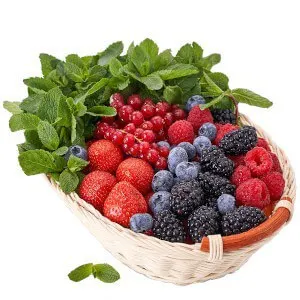 Did you know that all those little berries which you might see while shopping are very healthy? This is due to the large number of antioxidants that ensure a good metabolism and neutralize all harmful substances. Whether you eat them fresh, dried, or straight from the freezer, you will do your body a big favor by eating them.
Did you know that all those little berries which you might see while shopping are very healthy? This is due to the large number of antioxidants that ensure a good metabolism and neutralize all harmful substances. Whether you eat them fresh, dried, or straight from the freezer, you will do your body a big favor by eating them.
You already knew that fresh fruit is very healthy. In recent years, however, it has been discovered that a number of super berries contain many times the health properties of other fruits and can be classed as the healthiest berries on the planet.
In particular, goji, açai, noni, mangosteen, yumberry, and other berries native to South America, the Himalayas, and Southeast Asia are so rich in specific antioxidants that you only need to drink a small amount of the fresh juice to give yourself a daily health boost.
These ‘super berries’ are therefore the new health trend. They give you energy and vitality and increase your resistance.
Berries are not only tasty, but they are also super healthy. They are packed with vitamins, minerals, and antioxidants. So whether you throw them in the blender for a smoothie, mix them with yogurt or eat them as a snack, make sure you add these healthy berries into your diet.
Goji Berries
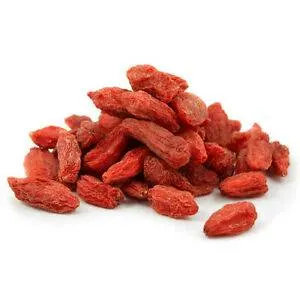 The goji berry is a super healthy berry that resembles a raisin when dried. This little miracle contains up to 500 times more Vitamin C than an orange and contains more antioxidants than any other food product.
The goji berry is a super healthy berry that resembles a raisin when dried. This little miracle contains up to 500 times more Vitamin C than an orange and contains more antioxidants than any other food product.
They contain eighteen amino acids and twelve times more protein than apples, oranges, or strawberries. Good for your immune system and protecting the liver. Undoubtedly, the goji berry is the most powerful berry on the list.
The berries are very tasty – their taste is somewhere between raisins, dates, and tomatoes, with a slight hint of lemon – and their juice is a real health bomb. They are a better source of beta-carotene than carrots and contain more vitamin C than oranges.
A daily 25ml serving of goji juice helps control blood sugar levels, lowers blood pressure, strengthens the immune system, boosts general energy levels, lowers bad LDL cholesterol, has anti-inflammatory properties, strengthens liver and kidneys, and improves vision.
Goji berries are definitely one of the so-called ‘super fruits’. They are full of vitamins, minerals, amino acids, and other important nutrients. They also contain many antioxidants, which help against skin aging and have a beneficial effect on libido.
In China, these small red berries are also called ‘happy berries’, because a handful of these berries daily is said to have a positive influence on the mood. Goji berries contain a whopping 18 amino acids and 21 minerals, the main ones being iron, copper, zinc, selenium, phosphorus, and calcium.
Blueberries
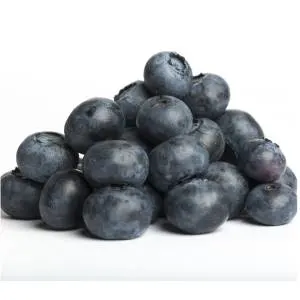 The blueberry, one of the healthiest fruits on earth, is packed with antioxidants. They are very healthy for your brain, anti-inflammatory, and anti-aging. They are also rich in vitamins C and E!
The blueberry, one of the healthiest fruits on earth, is packed with antioxidants. They are very healthy for your brain, anti-inflammatory, and anti-aging. They are also rich in vitamins C and E!
Blueberries are delicious on ice, in yogurt, or in smoothies. There is also pure blueberry juice, for sale in natural stores.
If you see blueberries in the supermarket, take them with you. Thanks to the coloring agent anthocyanin, these small berries have a good effect on the heart and blood vessels.
They play an important role in the aging process, have an anti-inflammatory effect, lower cholesterol, and protect against various diseases, including cancer and diabetes.
Eat them as pure as possible, because in combination with sugar, the blueberry loses its healthy powers.
Read More: Healthy breakfast smoothie recipes
Acai Berries
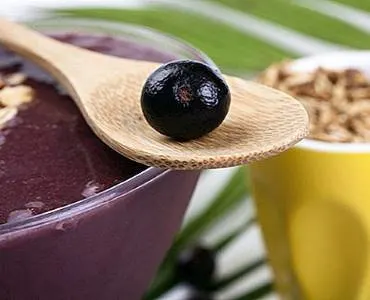 One handful of acai berries contains as many antioxidants as five servings of carrots, apples, or broccoli. The dark purple berry looks a bit like a grape and the taste resembles that of blackberries or cherries, with a hint of chocolate.
One handful of acai berries contains as many antioxidants as five servings of carrots, apples, or broccoli. The dark purple berry looks a bit like a grape and the taste resembles that of blackberries or cherries, with a hint of chocolate.
It comes from the açai palm (Euterpe oleracea) in the South American Amazon. Among the traditional Amazonian peoples, the acai berry is an important part of the daily nutritional intake. In the southern part of Brazil, açai is by far the most popular fruit drink.
The berry is not only very high in antioxidants and vitamins (especially B1, B2, B3, C, and E), but is also particularly rich in amino acids, omega-3 fatty acids, fiber, proteins, and other important phytonutrients such as anthocyanins and phytosterols. This ‘cocktail’ of healthy nutrients increases energy levels, lowers cholesterol, strengthens the immune system, and improves digestion and blood circulation.
Acai also has anti-inflammatory and antibacterial properties and has a positive effect on the joints and a beneficial effect on sleep. These berries are also known for protecting against chronic diseases, being good for the heart, and reducing the risk of neurological disorders.
Read More: What is the best blender for acai bowls?
Cherries
Cherries are best when they have had a lot of sun and are a nice dark red color. These red fruits are full of fiber and vitamins.
Research has also shown that cherries are anti-inflammatory and help to reduce the risk of cardiovascular disease and cancer.
In addition, cherry juice helps the body recover after strenuous exercise.
Read More: Should you put cherry pits in smoothies?
Mangosteen Fruit
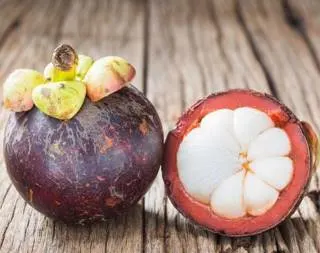 Mangosteen fruit, from the Garcinia mangostana Guttiferae tree, is a tropical berry that can be 3 to 8 cm in size, with a firm, tough, leathery, dark skin. Under that peel are four to eight white seed coats, which look like segments of an orange or mandarin.
Mangosteen fruit, from the Garcinia mangostana Guttiferae tree, is a tropical berry that can be 3 to 8 cm in size, with a firm, tough, leathery, dark skin. Under that peel are four to eight white seed coats, which look like segments of an orange or mandarin.
Its taste is sweet and delicate, a combination of strawberries, grapes, and lychee. It is a tropical fruit that occurs naturally in Southeast Asia (Indonesia, Thailand, etc.), but is also grown en masse in India and Australia and is nowadays also easily found in Africa and the United States.
What makes the mangosteen special are the xanthones contained in the fruit shell. They are flavonoid-like substances that have a strong antioxidant effect.
For centuries, Asian traditional healers have used mangosteen for its many medicinal properties, which can be found in the skin as well as in the pulp and seeds.
Mangosteen juice has a positive effect on the immune system, appears to have a cholesterol-lowering and anti-allergic effect, inhibits inflammation, and improves skin problems.
In addition, the juice has antibiotic and antibacterial properties and is active against parasites. It stimulates the production of good intestinal flora and thus promotes intestinal function.
Strawberries
This vitamin bomb is widely available, especially in the summer. The strawberry is delicious straight from the hand, but also with cream, ice cream, or yogurt!
In addition to the blueberry, strawberries contain the highest vitamin C content. In addition, of all the fruits, the strawberry is the richest in folic acid, a substance that is necessary to prevent anemia.
Read More: Strawberry kiwi smoothie recipe
Noni (Indian Mulberry)
 Noni (or Indian mulberry) is a fruit that comes from the Morinda citrifolia, a shrub that originated in New Guinea but is now found in Southeast Asia, India, the Caribbean, islands in the South Pacific, and Australia. The fruits are 7 to 12 cm in size. The brown juice of the noni tastes very bitter but has special health properties that are almost too numerous to mention.
Noni (or Indian mulberry) is a fruit that comes from the Morinda citrifolia, a shrub that originated in New Guinea but is now found in Southeast Asia, India, the Caribbean, islands in the South Pacific, and Australia. The fruits are 7 to 12 cm in size. The brown juice of the noni tastes very bitter but has special health properties that are almost too numerous to mention.
It stimulates the immune system, promotes cell regeneration, has an antibacterial effect, is a natural disinfectant, and is effective against fungi and parasites. Studies show that drinking noni juice supports various systems in the body, gives more energy, promotes sleep, slows down the aging process, has a detoxifying effect, and has a positive effect on the body and mind.
To neutralize the bitter taste of the juice, aromas are often added to it. Drink noni juice preferably ice cold and at least half an hour before a meal and on an empty stomach to take full advantage of its enzymatic effect.
Yumberry
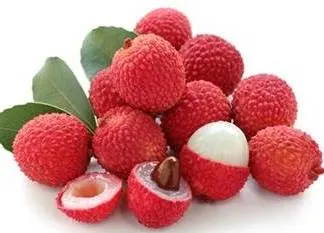 This fruit grows on trees that have been cultivated in China for more than two thousand years, especially in the area south of the Yangtze River.
This fruit grows on trees that have been cultivated in China for more than two thousand years, especially in the area south of the Yangtze River.
The actual name is Yang Mei (Myrica Rubra). In the local dialect, this sounds a bit like ‘yammee’. This soon became ‘yummee’, the English expression for ‘mmm, tasty!’
The juice of the yumberry tastes like a mixture of raspberry, pomegranate, and grapefruit. The fruit is about 2 cm in diameter and has knobbly edible skin (a bit like raspberries or lychees). The typical color is deep red, but there are also white to dark purple varieties.
In traditional Chinese medicine, the Yang Mei berry has been used for centuries and is mainly used for digestive problems and to improve eyesight.
The yumberry is rich in antioxidants (including carotene), vitamins (especially vitamin C, thiamine, riboflavin which is essential for the nervous system and metabolism), minerals, polyphenols (including ellagic acid), and contains a remarkably high percentage of oligomeric anthocyanins, antioxidants which the body cannot produce itself and which can only be absorbed from food.
Blackberries
Available in different colors and available all summer long. Packed with calcium, they also provide plenty of magnesium and iron, which are good for bones, muscles, and blood. In addition, blackberries of all fruits also contain the most vitamin E.
Elderberry
The elderberry is perhaps the great unknown in this list. But this berry should certainly not be missing from the list. Packed with vitamins A, B, and C and also beneficial for the immune system.
Cranberries
Cranberries are good for your bladder and rich in antioxidants. In addition, cranberries also contain large amounts of flavonoids. Flavonoids relax blood vessels, dilating them and lowering blood pressure. Delicious to cook with, but just like the blueberry, it is also available as a juice.
Cranberries are mainly grown in North America. Cranberries contain a lot of vitamin C, but also proanthocyanidins. These ensure that bacteria cannot adhere to the bladder wall, which helps to prevent a bladder infection.
Raspberries
It’s a shame that raspberries are often on the pricey side because they are a fruit that is packed with vitamin C and contains a lot of antioxidants.
Raspberries contain 10 times more antioxidants than, for example, tomatoes, kiwis, and broccoli.
Gooseberries
The gooseberry is a forgotten fruit and you will not often come across it in the supermarket. But like all the other fruits we mentioned gooseberries are rich in vitamins. The riper they are, the sweeter and the more vitamins they contain.
Read More: Summer smoothie recipes to cool you down
Healthiest Berries: Final Thoughts
We all know that fruit and vegetables are good for us and play an important part in our diet. But there are certain types of berries, often called ‘super berries’, that contain much more healthy properties than other fruit and vegetables.
By incorporating one or two of these berries into our diet, we greatly improve our health and the number of nutrients that we put into our bodies. Combine different types of berries, so you get a mix of vitamins, minerals, and antioxidants that enhance each other in effect. Try as many of the berries on this list as you can, and when you find a few favorites, eat them every day!
